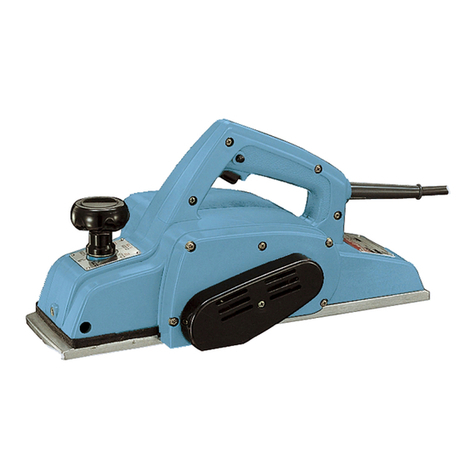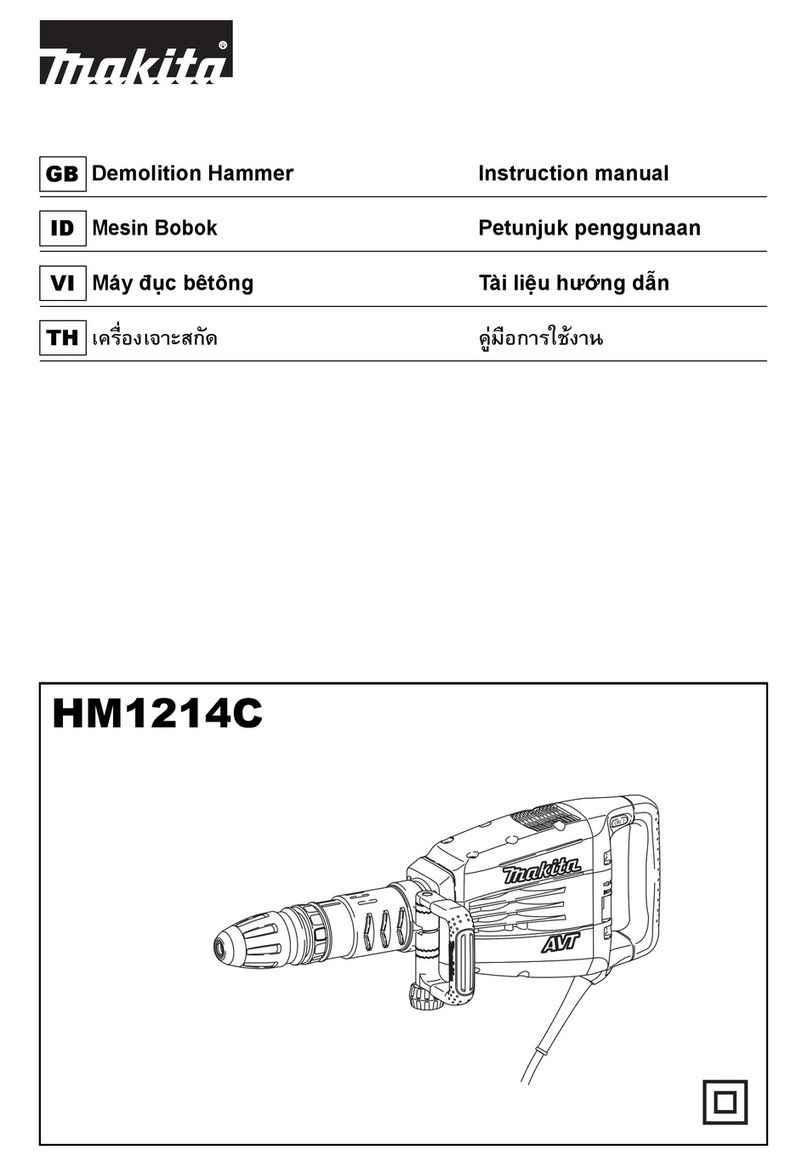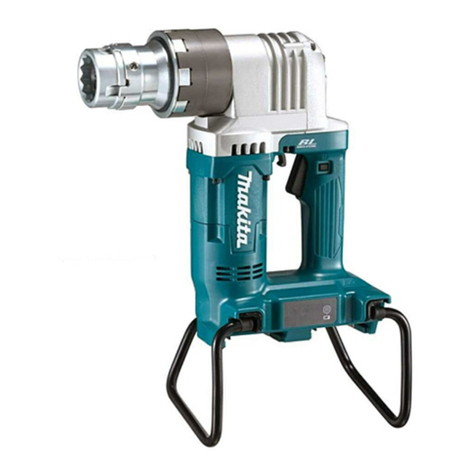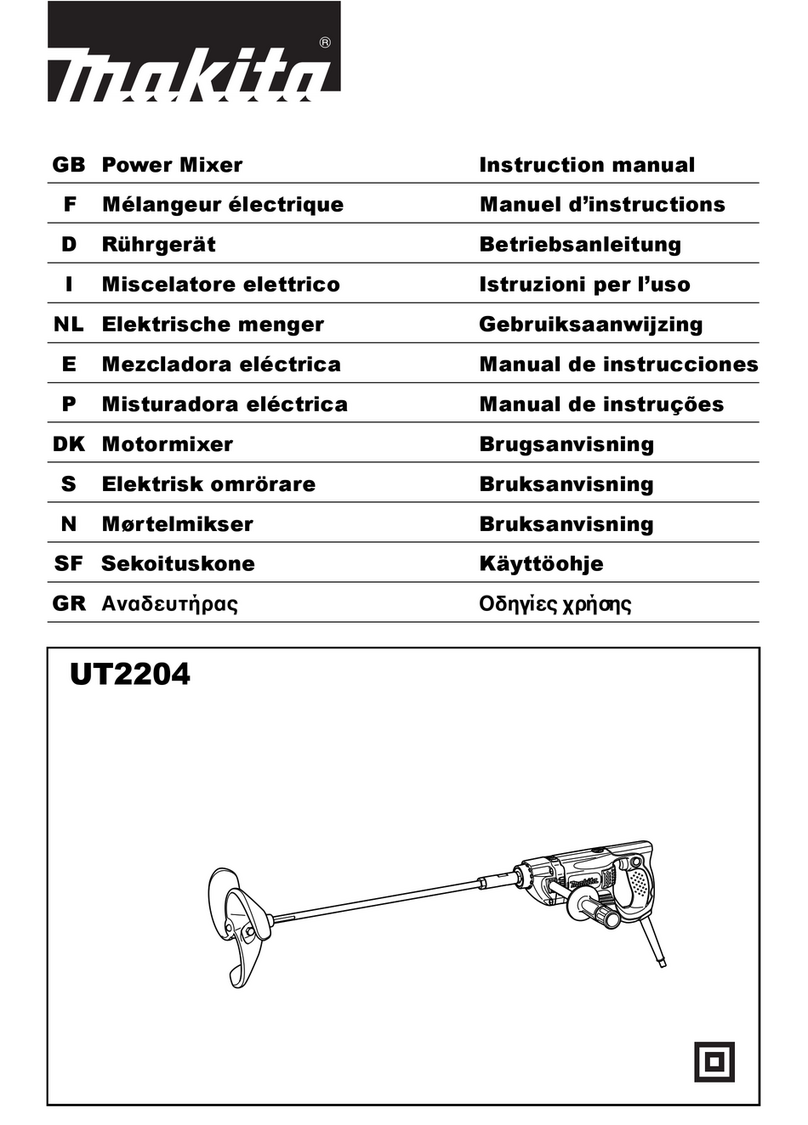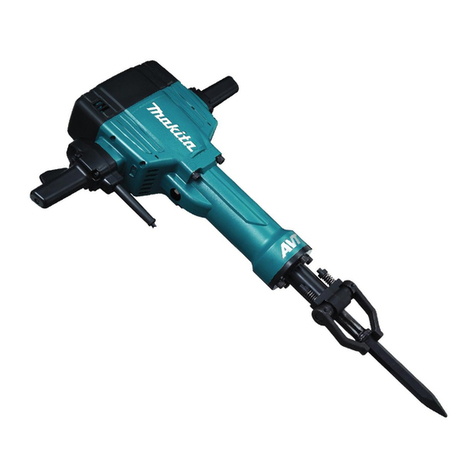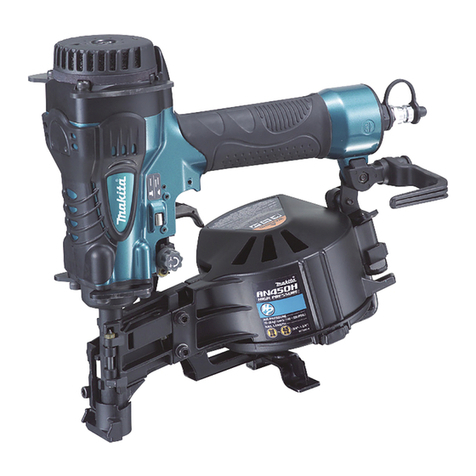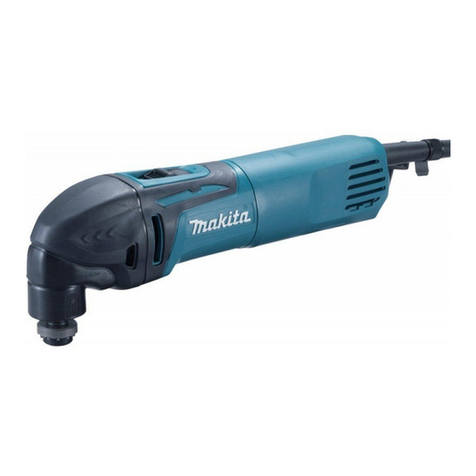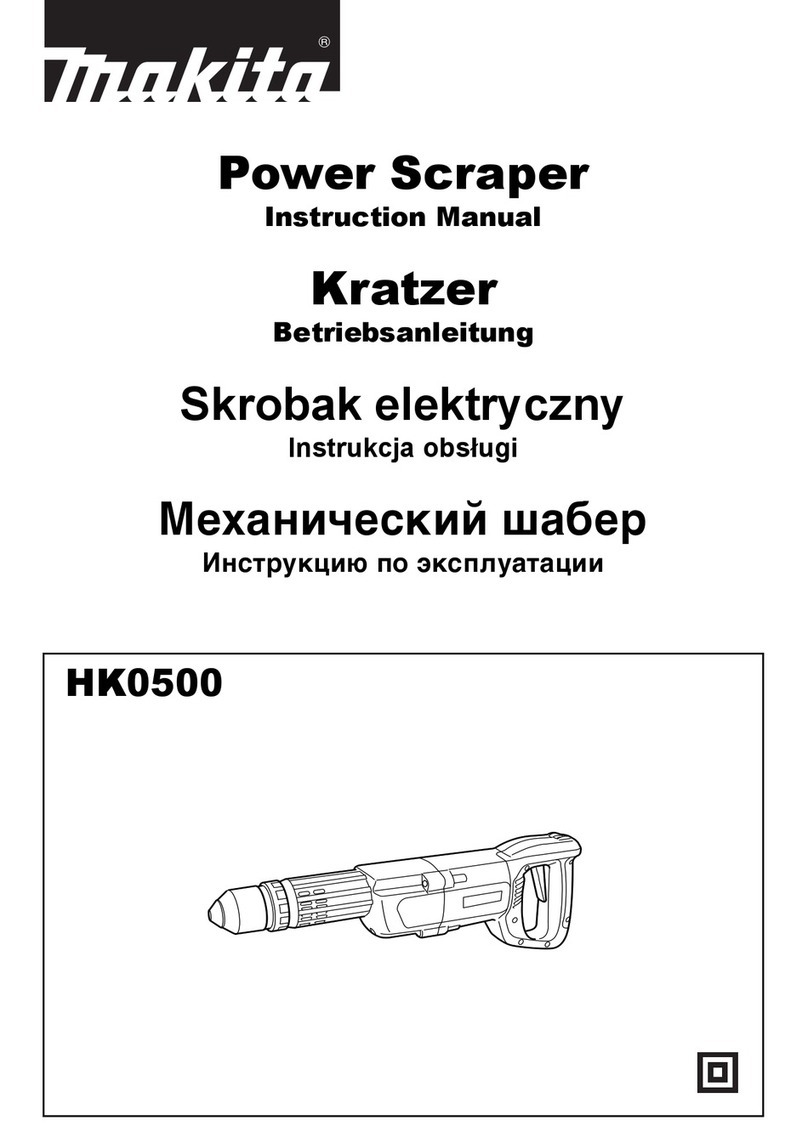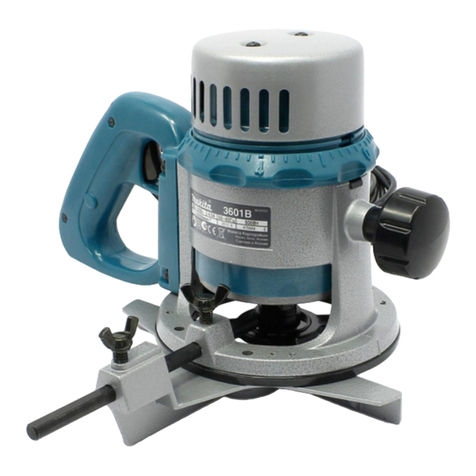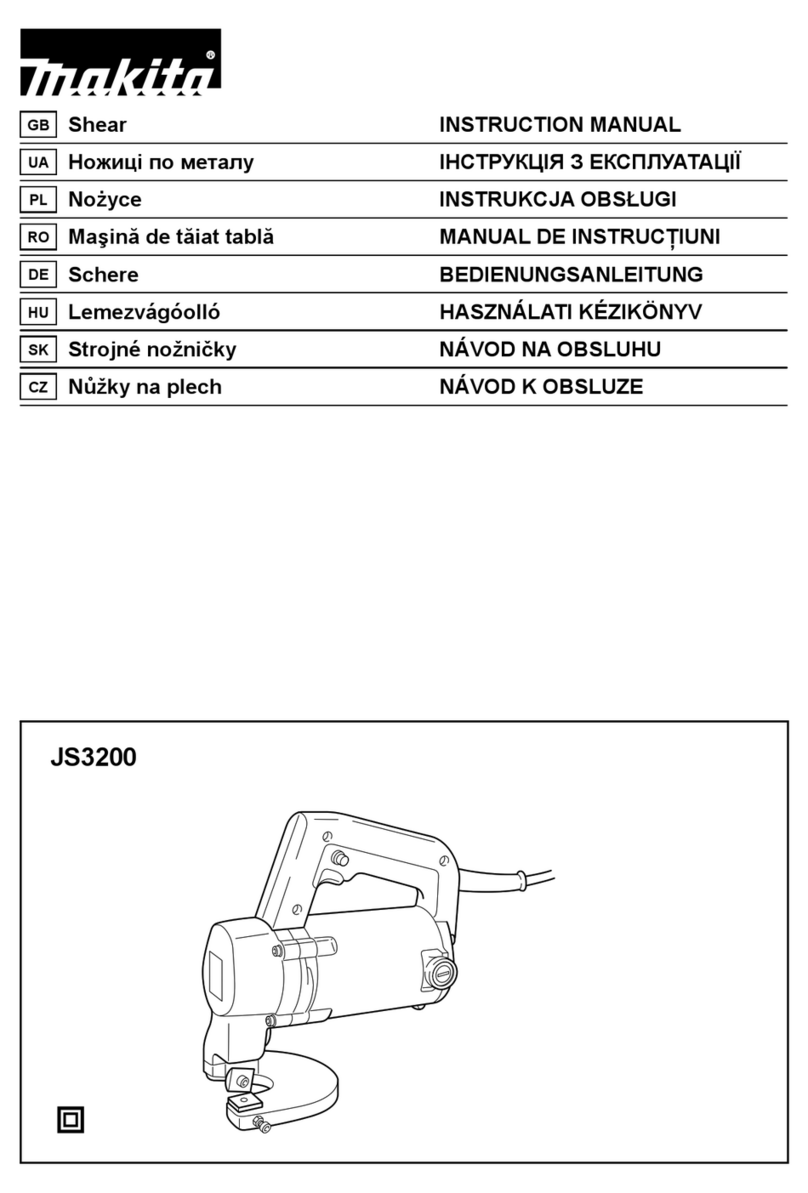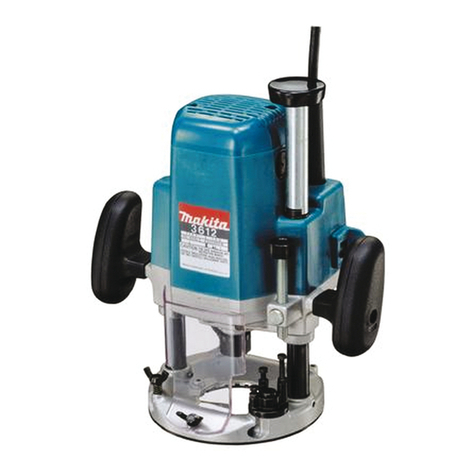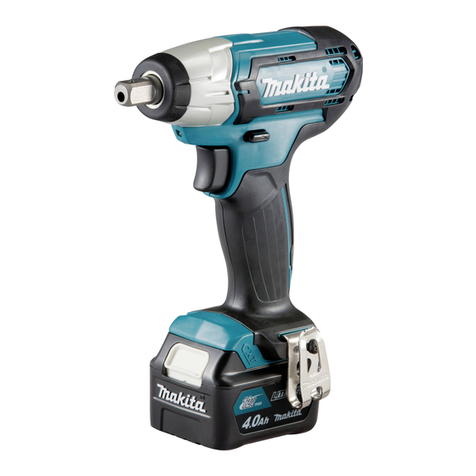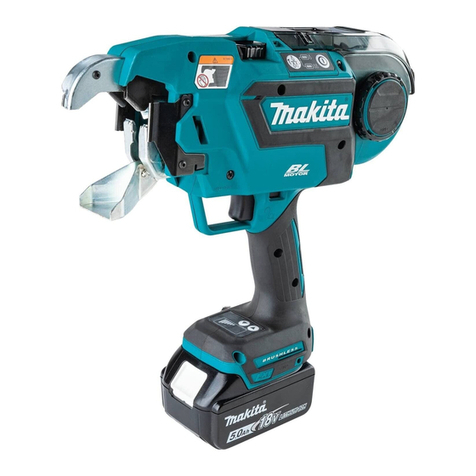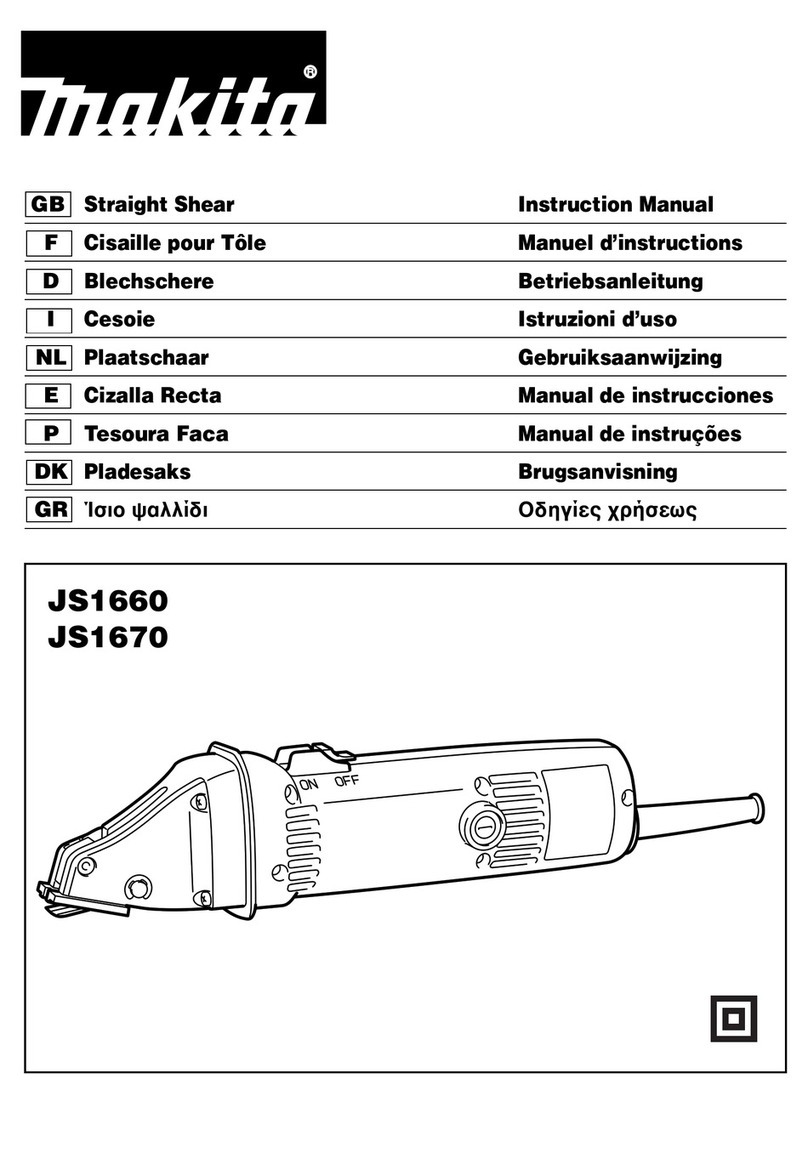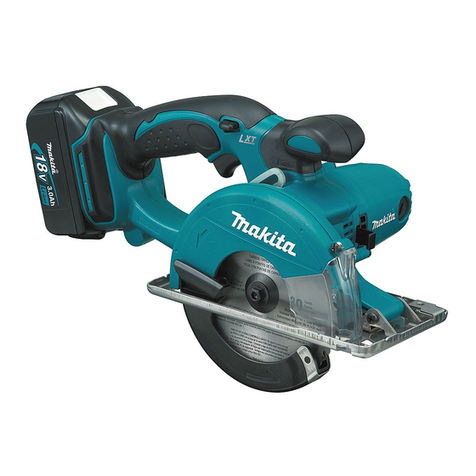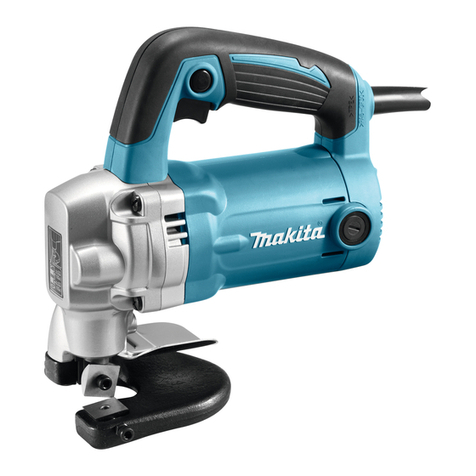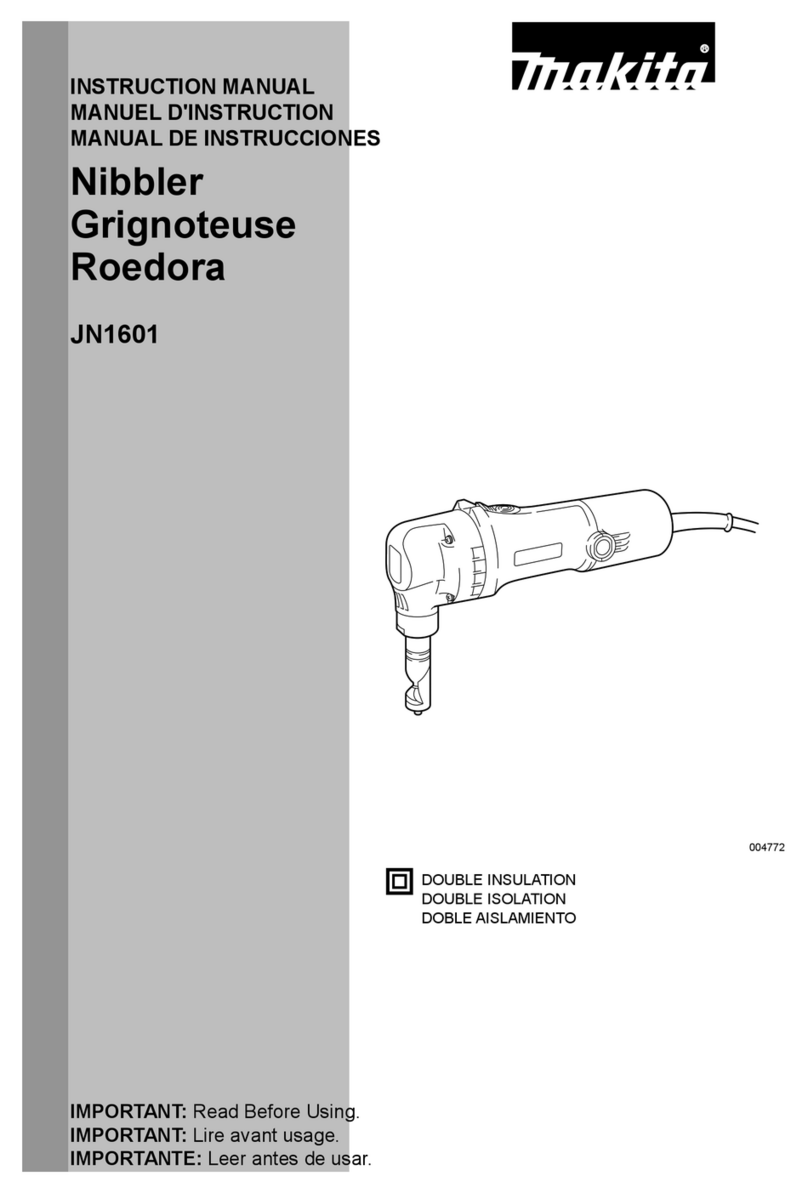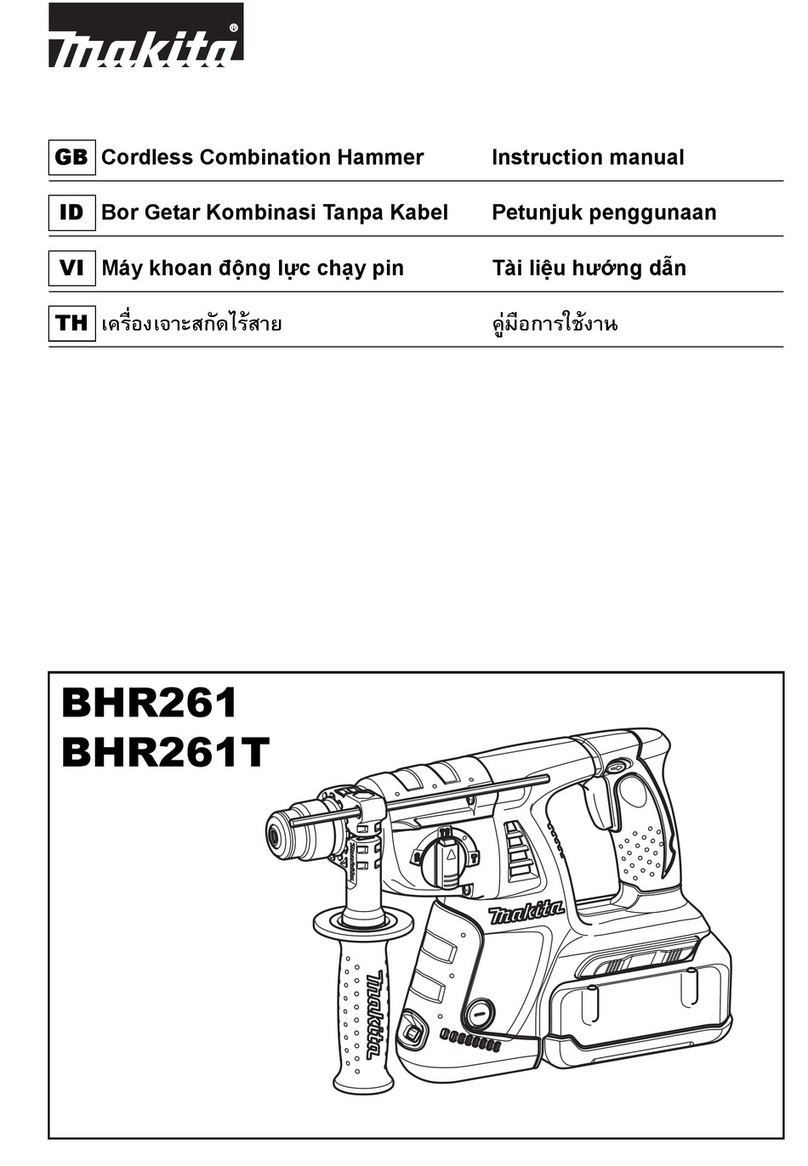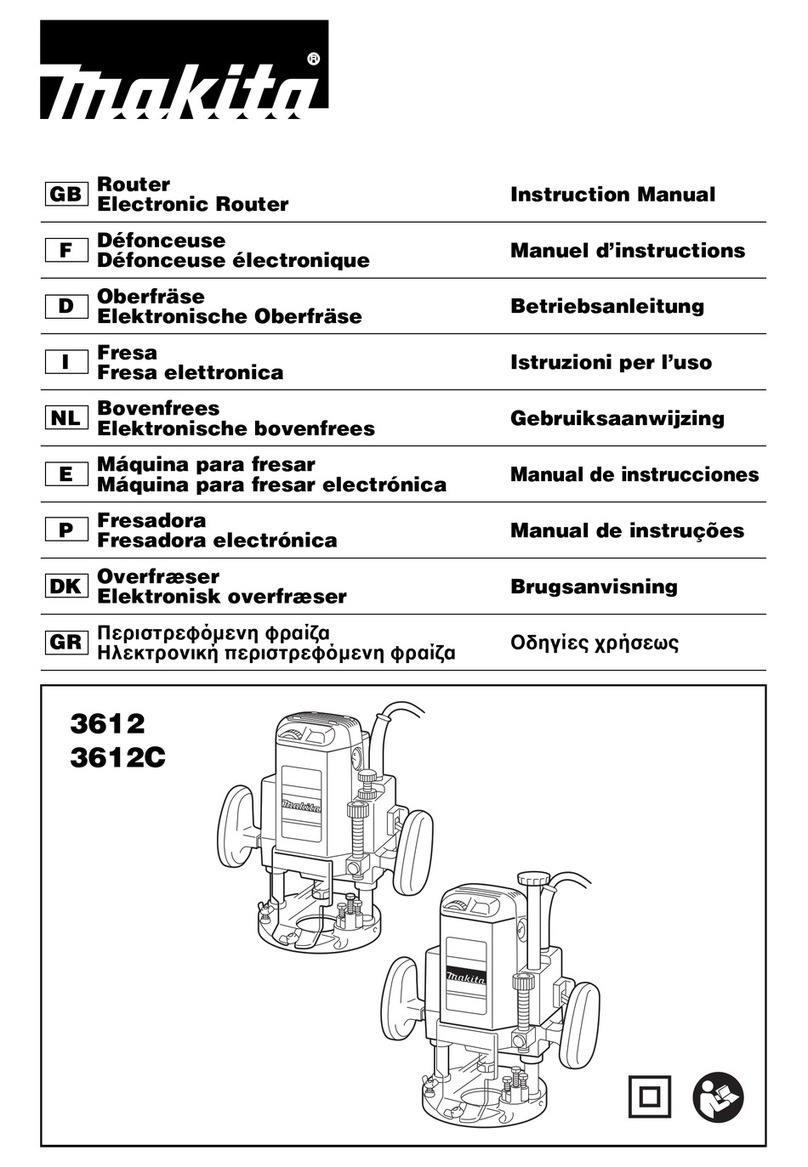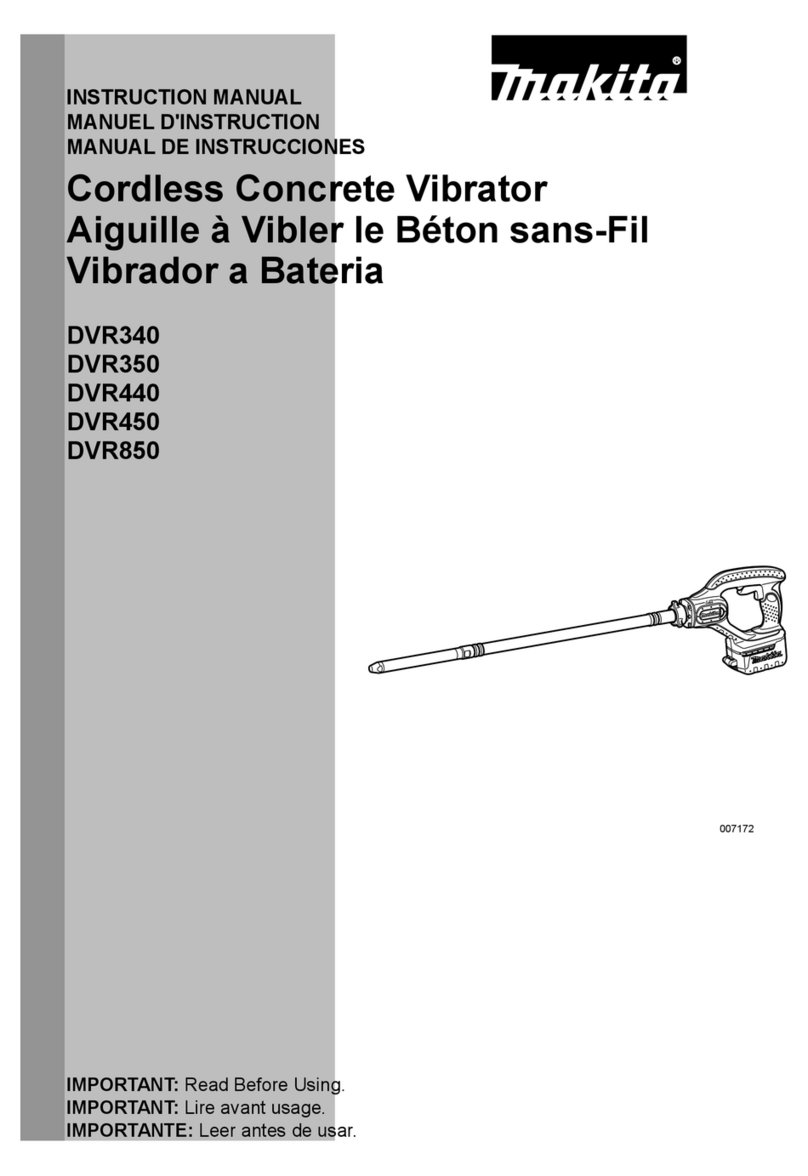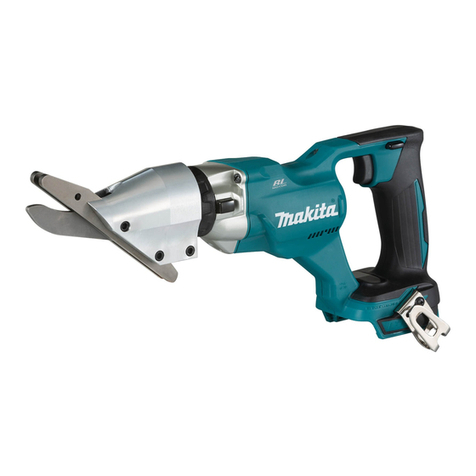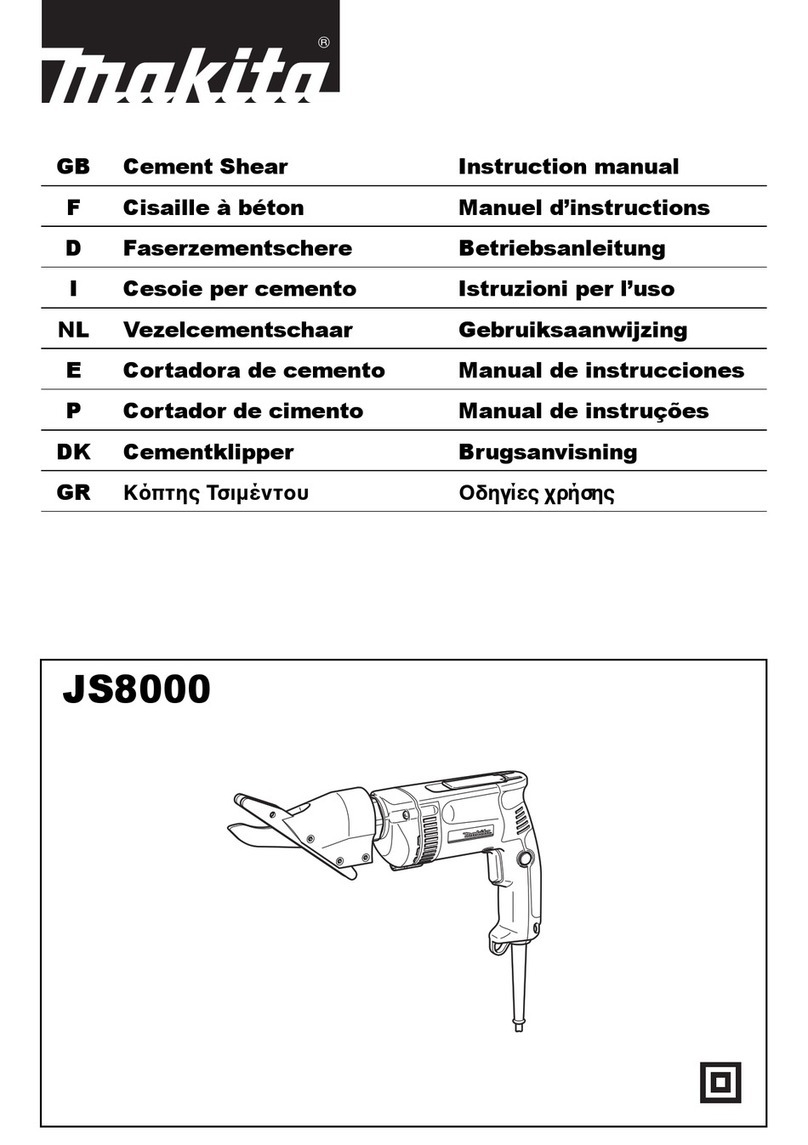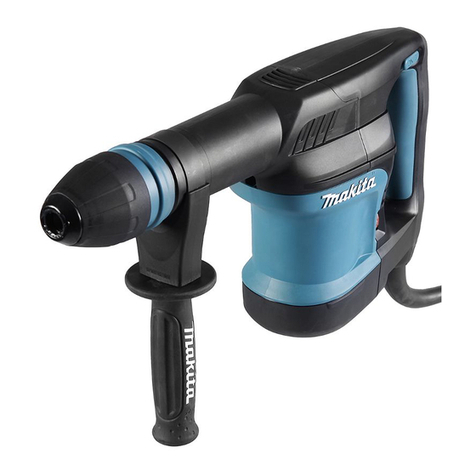
NOTE:
The battery charger is for charging Makita battery cartridge. Never use it for other pur-
poses or for other manufacturer's batteries.
When you charge
a
new batterycartridge or
a
batterycartridge which has not been used
for
a
long period
of
time, it may not accept
a
full
charge. This is
a
normal condition and
does not indicate
a
problem.You can rechargethe battery cartridgefully after discharging
itcompletely and recharging
a
couple of times.
If you charge
a
battery cartridgefrom
a
just operatedtool or
a
battery cartridgewhich has
been left in
a
location exposed to direct sunlight for
a
long time, the charging light may
flash in redcolor. If this occurs, wait for
a
while. Charging will begin after the battery car-
tridge
is
cooled by the coolingfan installed inthe charger. When the temperature on bat-
tery is more than approx. 70°C. two charging lights may flash in red color, and when
approx. 50°C
-
70"C, one charging light inredcolor.
If the charging light flashes alternately in green and red color, charging
is
not possible.
The terminals on the charger or battery cartridgeare cloggedwith dust or the batten/car-
tridge isworn out or damaged.
Coolingsystem
This charger
is
equippedwith coolingfan for heatedbattery in order to enable the battery
to prove its own performance. Sound of cooling
air
comes out during cooling, which
means nottrouble on the charger.
-Trouble on cooling fan
-Incomplete cool down of battery,such as, beingcloggedwith dust
The battery can be chargedin spite of the yellow warning light. But the chargingtime will
be longer than usual in this case.
Check the sound of coolingfan, vent on the charger and battery, which can be sometime
cloggedwith dust.
The cooling system is in order although no sound of cooling fan comes out, if the yellow
warning lightwill not flash.
*Always keep clean the vent on charger and battery for cooling.
*The products should be sent to repair or maintenance, if the yellow warning light will
Conditioningcharge
Conditioningcharge can extend the life of battery by automatically searching the optimum
charging condition for the batteries in every situations.
The battery employed in the following conditions repeatedly, will be worn out shortly, and
yellow warning light may flash.
*Yellow light will flash for warning inthe following cases.
frequently flash.
1.
Rechargeof batterywith its hightemperature
2.
Recharge
of
battery with its lowtemperature
3.
Rechargeof full charged battery
4.
Over-discharge
of
battery (continueto discharge battery inspite of downof power.)
5. Rechargeunder broken cooling system
The charging time of such battery is longer than usual.
8
